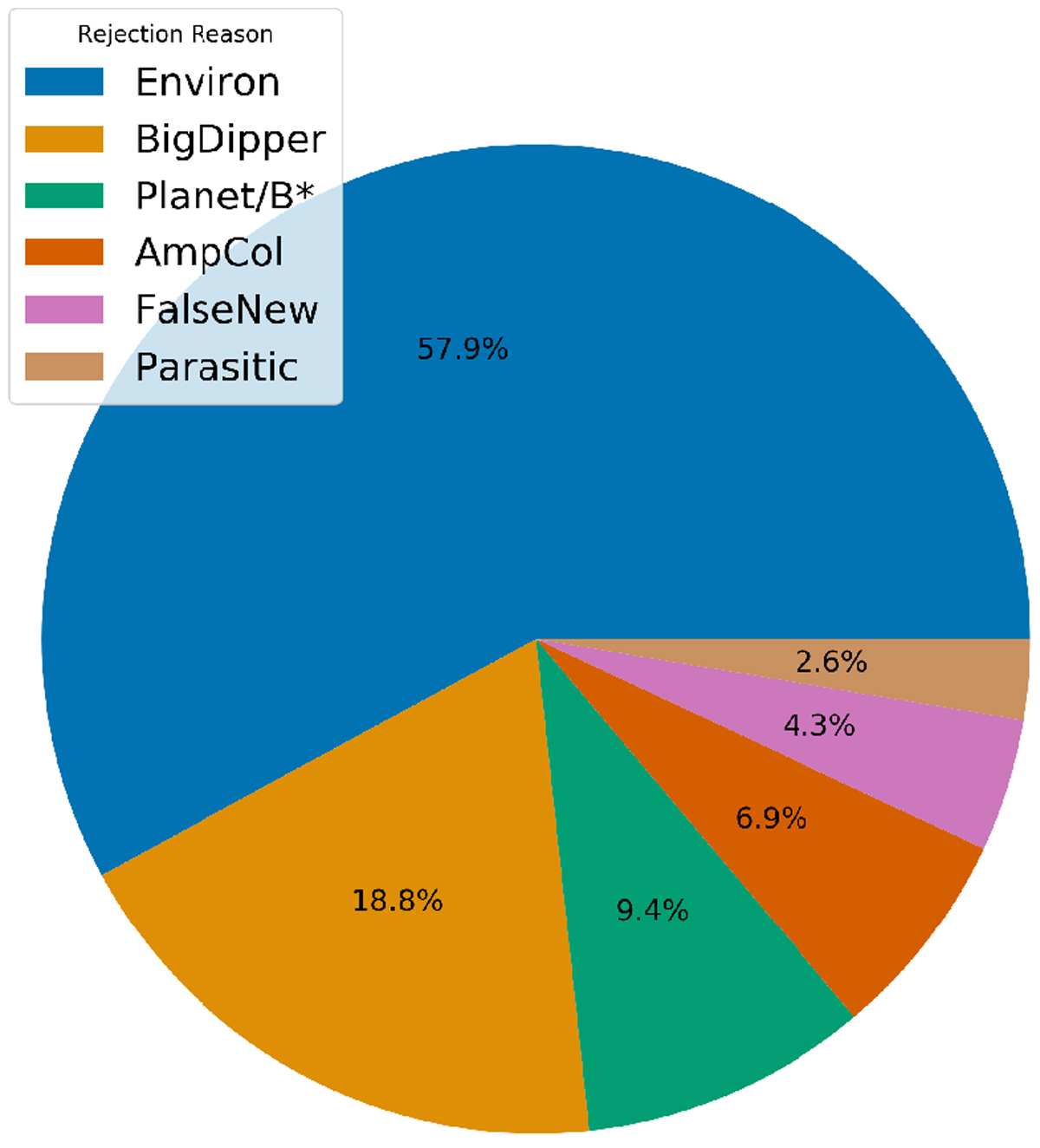Fig. 6

Most common classes of spurious alert that are rejected automatically by the GSA system (Sect. 2.7). Environ: alert rejected after assessment of near neighbour(s) within 10 arcsec, BigDipper: alerting transit is in wing of bright star, which leads to a fainter measurement being associated with the star (i.e. the window is effectively misplaced, Sect. 2.7.2), Planet/B*: alert likely caused by influence of bright star or planet in vicinity, AmpCol: likely Mira-like variable on the basis of historic flux-scatter and extreme red colour, FalseNew: source was new to the GSA database, but not new to IDT. This could be due to missing or late arriving data for an IDT run which was not ingestedinto the database, Parasitic: second FOV source affecting flux within transit for alerting source.
Current usage metrics show cumulative count of Article Views (full-text article views including HTML views, PDF and ePub downloads, according to the available data) and Abstracts Views on Vision4Press platform.
Data correspond to usage on the plateform after 2015. The current usage metrics is available 48-96 hours after online publication and is updated daily on week days.
Initial download of the metrics may take a while.


